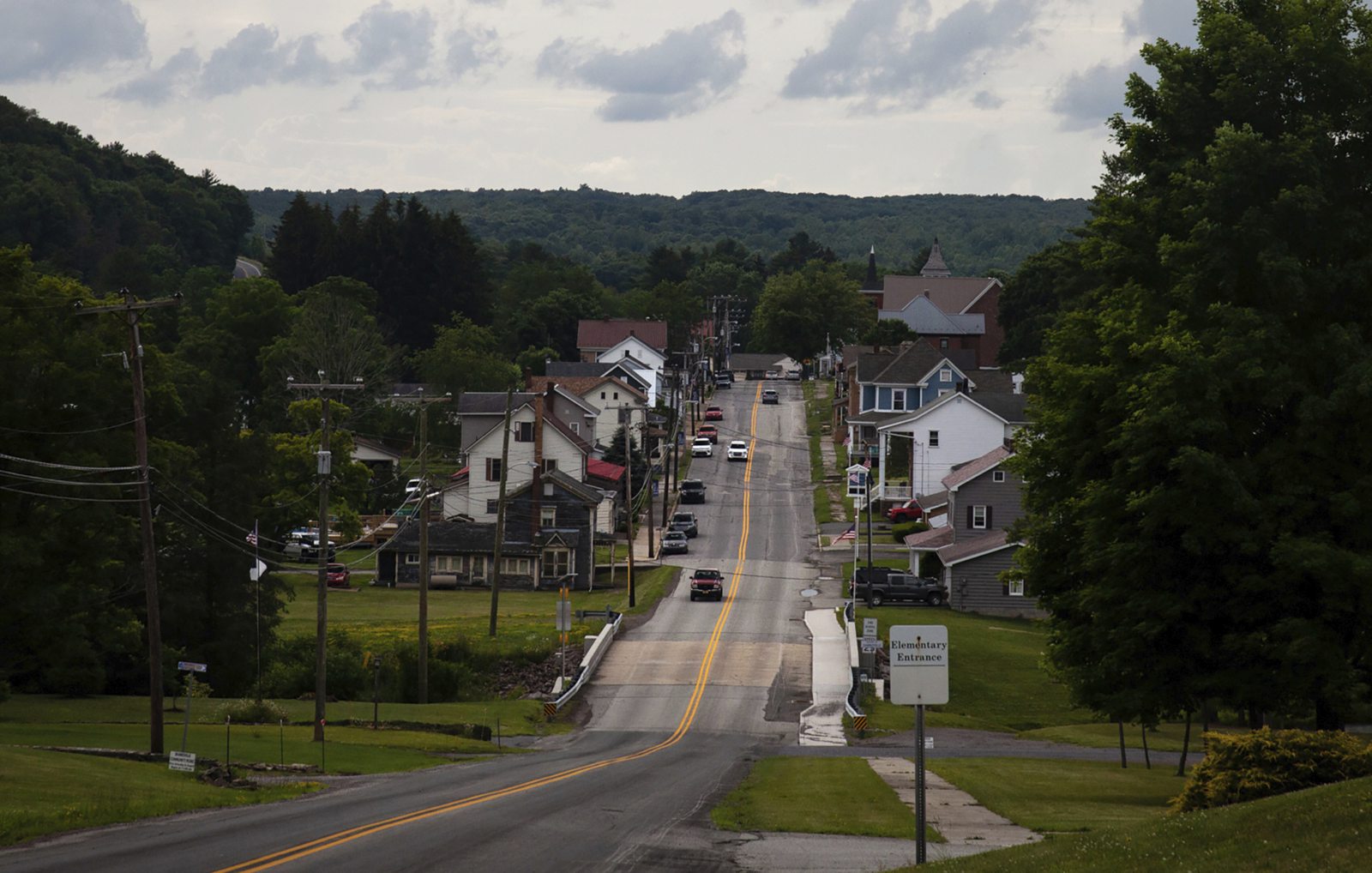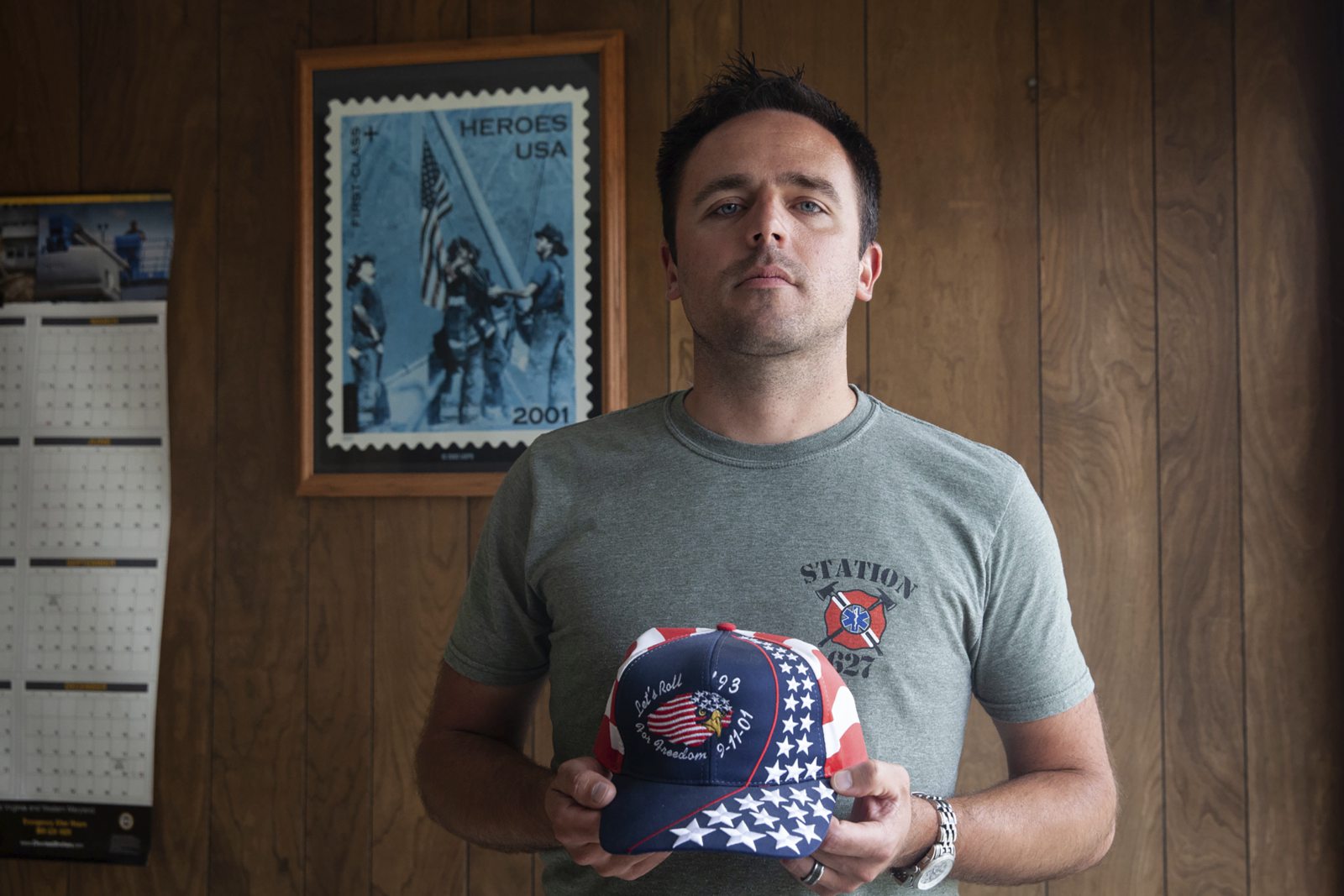

Story by RENATTA SIGNORINI
Photos by KRISTINA SERAFINI
Tribune-Review
Sept. 5, 2021
The question is typically answered with a generality — they’re from Pittsburgh, even though they actually make home about 80 miles east.
But when a member of the tiny Somerset County community of Shanksville is pressed by a stranger out-of-town to be more specific about where they live …
“They’ll say, ‘Where’s Shanksville?’ And I’ll say, ‘Where the plane went down,’ ” said Robin Lambert.
Often, nothing more needs to be said.

Shanksville has become a word synonymous with the worst terrorist attack on American soil.
And for its 240 residents, their views differ on how the rural town and area have recovered over the last 20 years. Some won’t talk about it at all.
“It’s back to a quiet town, but it was pretty busy the whole first year,” said Judi Baeckel, a longtime resident.
“I can’t say that it’s back to the way that it was before. I don’t think it’ll ever do that,” said Terry Shaffer, the former fire chief.
Shanksville is the type of community where people greet others on the street with a wave, where a neighbor will help a child with a flat bike tire. Where rural, small-town warmth radiates from well-kept homes, large front porches and blooming flowers.
Not where a hijacked airplane would crash in an empty field, killing 40 passengers and crew members. And certainly not a place that would become overrun by crash investigators, police, media, airline officials, emergency workers, curiosity seekers and an army of volunteers.
Until it did.
On Sept. 11, 2001, the rural community and its people were thrust into the spotlight, fielding media interviews and banding together to help those investigating the crash of United Airlines Flight 93 in Stonycreek Township, about 3 miles outside of town.
“We tend to be very private people and all of a sudden, on that bright, sunny day, we were thrust into the forefront,” said G. Henry Cook, retired CEO and current board chairman of Somerset Trust, a local bank.

On the morning of Sept. 11, 2001, Chris Baeckel walked about a half-mile to school.
His mom crossed a bridge over the Stonycreek River to work at the post office. Judi Baeckel raised the American flag and thought about how beautiful the day was. Normally a hub of activity in the town without a street light, the post office was quiet that morning, she remembered.
It wasn’t long before news spread about the coordinated terrorist attacks in New York City and at the Pentagon in Washington, D.C. A resident came in. They talked about what was going on.
“At least we know we’re safe here in Shanksville,” Baeckel recalled the customer saying.
By then, the doomed plane likely was headed their way.
Flight 93 took off from New Jersey 25 minutes late, at 8:42 a.m. Its destination was San Francisco. Aboard were seven crew members and 37 passengers — four of whom were hijackers.
The plane veered back east near Cleveland around 9:30 a.m. The hijackers had taken over and set a course for the nation’s capital. Passengers and crew members began calling their families, friends and authorities. A Westmoreland 911 dispatcher answered one from passenger Edward Felt, who reported the hijacking.
Passengers and crew members voted to fight back. They stormed the cockpit. The plane roared over Southwestern Pennsylvania before going down a few miles south of Route 30, about 40 miles from Greensburg. Shanksville residents were some of the first on the scene, stunned by what they saw — a large crater, small pieces of wreckage, human remains.
Then came the deluge.
In 1798, Christian Shank left the area of Hagerstown, Md., and set up what would become Shanksville along the Stonycreek River. He built a cabin, grist mill, two saw mills and a woolen mill, said Jacob Miller, Somerset Historical Center curator, referencing the book “Reflections of Stonycreek.”
Stonycreek Township formed six years earlier, when the land was still part of Bedford County. Shanksville continued to grow as homes and businesses were established. The town once had blacksmith shops, general and clothing stores, a tin shop and brickyard, among other amenities, Miller said.
Shanksville is surrounded by Stonycreek in the rural county. In the 1820 Census, Stonycreek’s population was 754. It had more than doubled by 1900. Now, 2,200 people call the township home.
Shanksville first appeared on the 1920 Census as a municipality, with a population of 260.
It remains a quintessential small, rural town.
Amish horse and buggies clip-clop down Main Street. Residents stop and chat on the sidewalks.
There’s a post office, volunteer fire department, a few churches and a corner store. Borough business is conducted out of an old bank. A park with ball fields and basketball courts sits near Shanksville-Stonycreek School District buildings at the edge of town.
It’s the kind of place where kids spend all day outside playing, coming home when the street lights turned on — just like Chris Baeckel did. He graduated high school there in 2005. Now, he is mayor.
“As time goes on, it slowly gets back to what it was,” he said.
In the immediate aftermath of the crash, Shanksville was one of the few access points to the scene. The town was swamped with traffic and people.
“It was like a city,” Judi Baeckel said.
Her son and his friends stood on the lawn watching their hometown become something they didn’t recognize. He was in third period history class when the school shook. The plane was mere seconds away.
“All of a sudden, just truck after truck after truck is coming in, hauling equipment,” Chris Baeckel said.
Judi Baeckel’s yard served as a makeshift memorial for weeks. A wooden sign — replaced with a blank slate about a dozen times — allowed visitors to sign their names, write a message or draw a picture.
“People came from everywhere and signed it,” she said. “There was just random people from all around the world and all over the country.”
As the years passed, the impact on Shanksville began to lessen — though reminders remain.
Borough street signs now are yellow lettering on a red, white and blue flag background. The National Park Service built a memorial to the 40 passengers and crew at the crash site with input from local residents, some of whom continue to volunteer there. A new road was built to the memorial from Route 30, diverting some traffic from the tiny borough.
Robin Lambert, whose father served as mayor for about 15 years, still lives in the house where she grew up at North and Bridge streets.
“Our town hasn’t been really the same,” she said.
There’s more traffic, especially on summer days and weekends. She, Shaffer and the Baeckels expect even more with September being the 20-year mark.
“I bet I tell three people a day directions,” Lambert said.
Shaffer, a life member of the fire department, said anytime the station’s bays are open, passersby take it as an invitation to chat. He regularly spots people looking at the giant memorial cross.
“We’re talking people from all over the world,” he said. “It’s a crazy thing, and I don’t see it stopping in the near future.”
The crash also brought about the concerted, continuing volunteer effort among community members to make sure those aboard Flight 93 are never forgotten. Some locals help at the national memorial, while others work to build a trail system connecting the memorial to the Great Allegheny Passage, a rail-trail that stretches from Pittsburgh to Maryland, then connects to Washington, D.C.
“The tradition of volunteerism is very deeply ingrained in Somerset County,” said Cook, the retired banker.
Locals take being stewards of the story and memory seriously. The families of those aboard Flight 93 were welcomed into the community, just like new neighbors, in the days and years after the crash. Lasting friendships were forged.
That kinship is rooted, in part, in an invitation from the fire station. Shaffer said the department offered those families a safe harbor — a place to escape media attention and have a meal.
“People did come down, and we’ve been doing it ever since,” he said.
Now, lunch is open to anyone who shows up. Shaffer said there is a motorcycle group and others who visit annually.
Traveling into Shanksville from Route 30 along Lambertsville Road, a sign describes the borough as “a friendly little town” that honors the heroes of Flight 93. American flags proudly wave atop poles. Red and white flowers line a garage. Welcome banners are affixed to utility poles.
The crash and the town are forever intertwined in a bond yet unbroken.
“That will never happen, that’s for sure,” said Baeckel, the boy turned mayor.
Renatta Signorini is a Tribune-Review staff writer. You can contact Renatta at 724-837-5374, rsignorini@triblive.com or via Twitter @byrenatta.